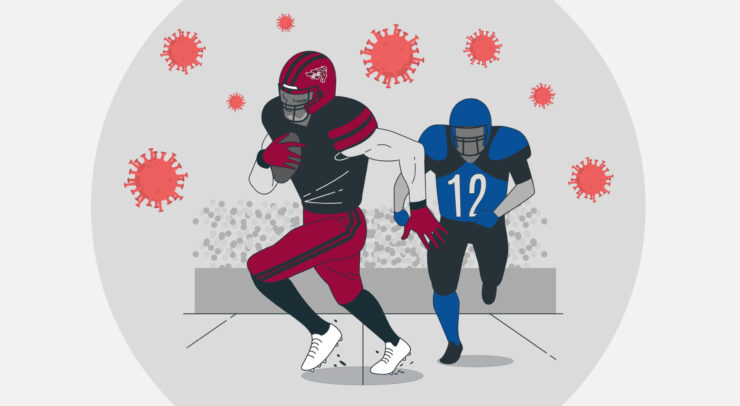“Gyms have a role to play in actively fighting this pandemic”
On Nov. 18., a coalition between community gyms and medical doctors from throughout Ontario wrote a letter proposing a partnership with government and public health officials at the federal, provincial and municipal levels.
The letter, which was sent to the Fulcrum, explains the goal of keeping gyms safely open during the ups and downs of COVID-19.
Peter Shaw, co-owner and trainer at CrossFit NCR formed this collective due to the impact that COVID-19 has had on small businesses, gyms in particular. While the government has offered support to businesses during the pandemic, COVID-19 has ruffled the gym industry, with various small businesses at risk of falling into bankruptcy.
“From a business perspective, we’ve had to adjust our business plan on the fly as we’ve opened and shut,” Shaw said to the Fulcrum. “Everyone is being affected in some way, shape, or form.”
“Mainly the thought came to mind during the second shutdown, we’re eight or nine months into this pandemic and we’re starting to see more evidence about COVID-19 in terms of how it spreads, more evidence in terms about who is more likely to experience symptoms, and so on and so forth.”
The letter includes data presented by the Ontario COVID-19 Science Advisory Table which revealed that only five per cent of COVID-19 cases in Ottawa are related to exposures in gyms. Higher risk areas include schools, daycares, long term care and retirement homes.
While Ottawa gyms currently remain open, gyms in ‘red zones’ and lockdown areas have been forced to completely close. As gyms follow COVID-19 guidelines, the data from the Science Advisory Table shows that gyms have proven they are not a COVID-19 hot spot.
Dr. Kwadwo Kyeremanteng, who works at the Montfort Hospital in the ICU and at The Ottawa Hospital in Critical and Palliative Care is one of the medical personnel who signed the letter. In addition to praising those in the gym industry for their efforts to protect clients, Dr. Kyeremanteng mentioned the non-physical benefits of going to the gym.
“This is a great way for people to deal with the mental aspect. Mental health often improves with physical activity. We think of a lot of young people aren’t having as much socialization as they once had because there’s no school [and] there’s no university,” said Dr. Kyeremanteng.
“We need to do a better job at addressing the problem, gyms aren’t a problem spot.”
“For me, it’s really important to drive the message that gyms can be a part of the solution instead of part of the problem,” continued Shaw. “I think where that starts is with policy makers recognizing that that’s the case and then we can come in together and form a partnership.”
As expressed in the letter, gym owners hope to form a partnership with the government and health officials in order to discuss and plan the best ways to continue to stay open while simultaneously keeping the community safe.
Shaw referenced talking with shareholders on how to “fund and implement ground level safety protocols” so gyms can stay open and help communities “stay as healthy as possible.”
“This is a great way for health promotion and really ensuring that citizens do their best to stay as healthy as possible,” Dr. Kyeremanteng said.
“The main point is that gyms have a role to play in actively fighting this pandemic,” Shaw said.
“We know that we can be safe and that we have been safe up to this point. We want the policy makers to come to the table and give us a chance to discuss potential ways we can continue to keep the community safe from COVID-19 spread.”




